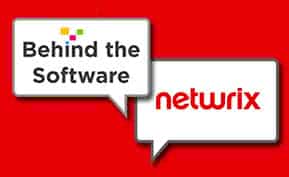IT Management
IT Buzzwords You'll Hear in the Boardroom in 2013

The tech industry lends itself to the spawning and spreading of buzzwords. Progressive software version updates and patches get everyone used to business cycles where the roll-out of new features, focus shifts and bug fixes happen on a frequent and regular basis. Equally speedy is the coining of new IT management industry jargon to define and categorize all the trends and concepts that emerge out of the crush of new technologies.
Not all buzzwords are complete fluff. In fact, many if not most of them are based on tangible ideas or technology with real-world implications. Cloud computing and big data, two this year’s trendiest topics, are both tangible fields of technology with real industries built around them.
What “elevates” such words to buzzword status, however, is their appropriation by those who have a patchy (at best) understanding of how the trends and/or technologies affect their business. When such people are in positions of authority–such as a chair on the board–it can be a frustrating experience for an IT professional to sit there and listen to half-informed pronouncements regarding his livelihood.
Here are some of the buzzwords we’re confident you’re going to be seeing more of in the coming year:
Web 3.0
Has anyone actually decided on what this one means? Come to think of it, what would be the governing body with the authority to make such a decision? Web 2.0 has come to be the catch-all term for the user-driven design aesthetic that succeeded the 90s era of static, hands-off websites, so what constitutes a Web 3.0 technology?
One of the more common answers is that it will be, as tech blogger Amit Agarwal describes it, the rise of the “semantic web,” systems that can better understand the meaning behind user-created data. That way delivery of quality search results and targeted content is far more effective–imagine the whole internet being like Siri… or something like that.
Analytics… everything!
Now that Big Data has gone mainstream, everyone wants to get in on the benefits that can be derived from digging through one’s backlogs of archived data. It seems like just about every organization has untold amounts of data warehoused away, and big data analytics vendors with solutions able to drill down to ludicrous levels of granularity.
This isn’t to say that there aren’t beneficial insights to be derived from highly targeted analytics, but as always it ties back to whether or not the statistics derived from the data will provide you with information that’s beneficial to the company–be it cost savings, greater efficiency or the
Data Scientist
When everything is now all about big data and business intelligence, obviously you need specialists to make sense of it all, and that’s where the data scientist comes in. Well, at least in theory.
Data scientists are specialists in the aforementioned fields, but it’s already been noted that people are having trouble agreeing on the definition of what constitutes a data scientist. Others are skeptical as to what differentiates a data scientist from a standard analyst. Forbes technology contributor Gil Press points out that many aspects of the data scientist’s job will most likely be automated in the near future.
Whatever the case, the job title cited as “the Sexiest of the 21st Century” by the Harvard Business Review is most likely here to stay.
Retargeting
Retargeting is a relatively new segment of business software. What it does is, through the use of cookies, track the browsing habits of visitors to your website. Now, tracking cookies are nothing new, but how retargeting differentiates itself is that when those visitors then leave your site and go elsewhere, the display ads they see on different sites are for your products and services.
Retargeting has the potential to transform the way both online media outlets and advertisers valuate display advertising, but with the segment rapidly gaining mainstream buzz it’s not hard to imagine many a boardroom in 2013 filled with half-informed platitudes about retargeting will “save this business!”
Behavioral targeting has been around for awhile now, and one thing thing even an advanced new technology in the field like retargeting can’t do is increase the appeal of advertising that fails to engage the potential customer in a meaningful way.
Consumerization of IT
Like most of the rest of the entries on the list, this one is for real. Long seen as a source of endless headaches by many an IT professional, consumerization of IT represents the shifting of authority over company software and tools from top-down IT department decisions to the actual usage habits of the individuals doing the work.
Trends like Bring Your Own Device (BYOD) are closely tied to consumerization. Once an IT headache, it now seems ready to come into its own as more and more teams realize that this shift can result in increased employee satisfaction and, consequently, greater productivity.
But despite the proven benefits, all the security and compatibility issues still exist too. When the topic comes up in the boardroom in the coming year, as it invariably will, it’s going to hinge on the IT expert to cut past the fluff on both sides and present a hybrid IT policy that makes actual sense.
Looking for more insider-perspective posts? Discover all of our blog posts on trends from the software industry by visiting the News and Trends section of the Business-Software.com blog.





